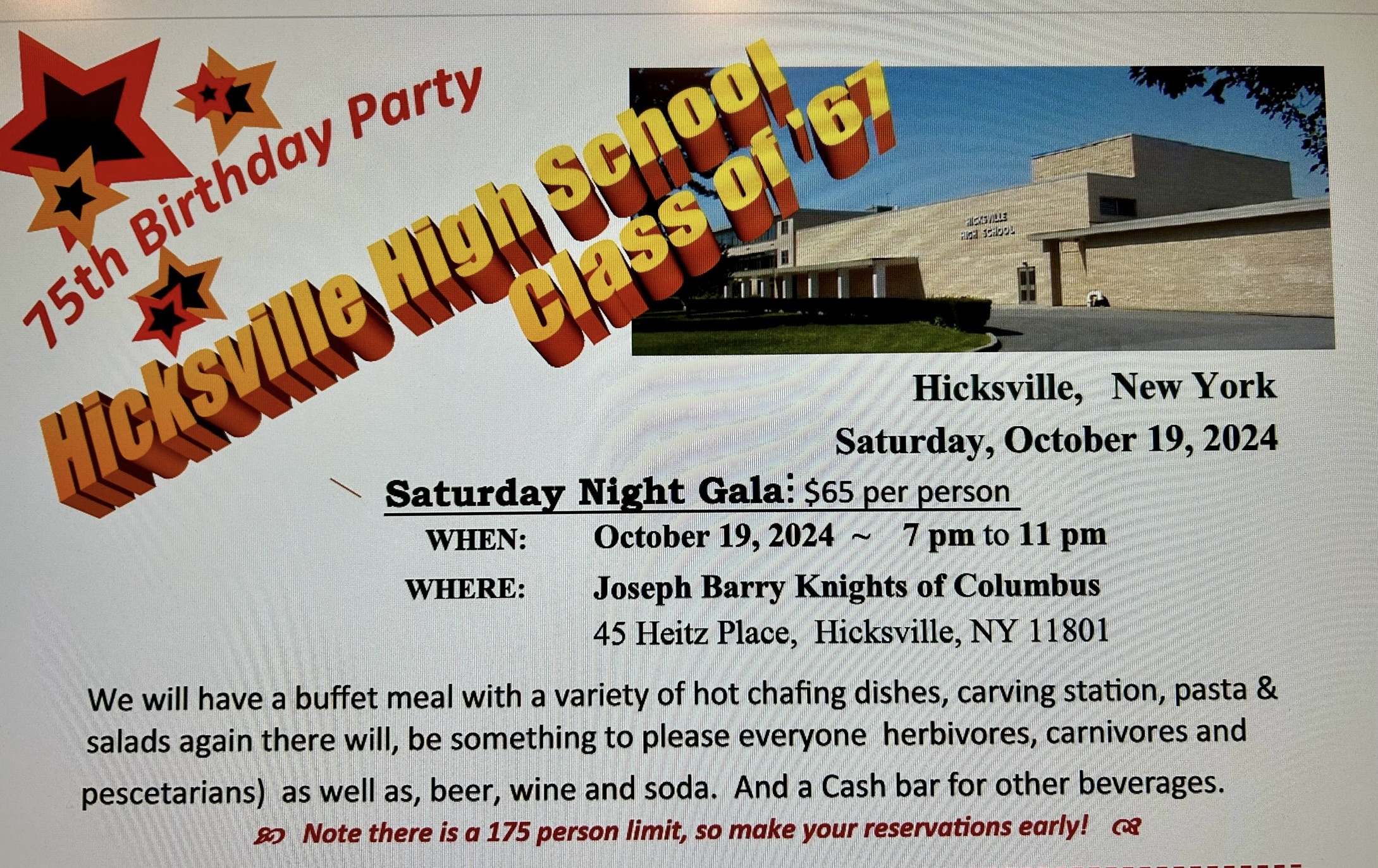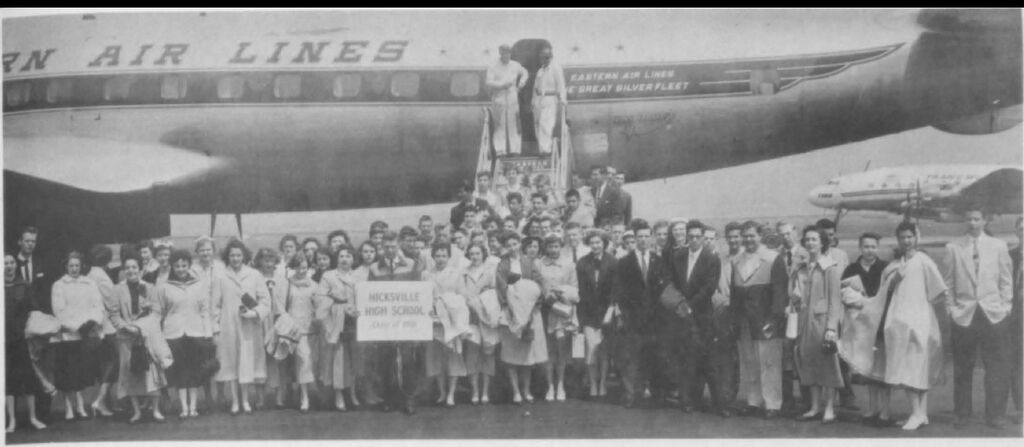 Newsletter for the Alumni and Friends of Hicksville High School - Hicksville, New York
Newsletter for the Alumni and Friends of Hicksville High School - Hicksville, New York
Dear Readers,
We hope you enjoy our latest issue. If you log into the website, you can click on Features and then Biographies to submit your biography to the site! As you will read in the Etcetera section, we are preparing to write about Senior Trips. We would love to have your memories and photographs for the article, along with your name and graduation year. Please send it to us at
- Your HixNews Team
View The Hix News Team
Editors:
- Wendy Elkis Girnis '77
- Stefanie Cedar Shames '77
- Ron Wencer '64
Webmasters:
- Bruce Scherzinger (spouse of Eileen Goldstein '77)
- Gail Schwartzman Mayer '73
- Matt Kennedy '08
- Roger Whitaker (Webmaster Emeritus)
- Karl Schweitzer '81
- John Maniec '64
- Susan Schuler Nolan '77
- Wayne Sternberger '71 Editors Emeritus:
- David J. Rubin - '82, Elliot Gorlin - '63
- Valerie Pakaluk - '51, Henry Lichtenstein - '59
- Carol McCormick Konen - '73 Founding Editors:
- Pat (Koziuk) Driscoll - '56
- Linda (Piccerelli) Hayden - '60
- Buffalo Bob Casale, '61
Hicksville's Aquatic Center and Alumni Swim Meet
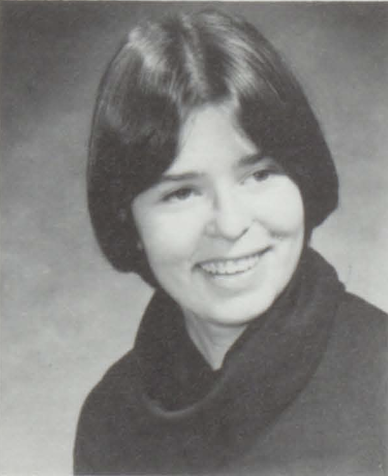 by, Wendy Elkis Girnis (HHS Class of 1977)
by, Wendy Elkis Girnis (HHS Class of 1977)
One of the first questions I remember being asked as a Hicksville High School 10th grader in 1974 was, “Have you seen the pool on the roof yet?” Most of us, who didn’t have older siblings, thought that was cool that the school had a pool, only to find out it was just a joke played on incoming students. There never was a pool on the roof. Today the question that is asked of incoming students is, “Have you been to the Aquatic Center yet?” The latter is located at the back of the school where the tennis and handball courts were. The Aquatic Center exists.
Ground Breaking Hicksville Public Schools Site
Construction on the Hicksville Public Schools Aquatic Center started in December of 2019. By October 2021, the public was given tours as part of the Homecoming Fair. The Aquatic Center boasts a 6-lane heated lap pool with starter blocks and with a diving board. USA Swimming requirements are followed.
The building itself is 17,952 square feet. The building is connected to the main building through a series of corridors and vestibules. There are male and female locker rooms with showers, offices for the coaches, bleachers for a cheering crowd, and a concession stand. The center opened on March 9, 2022.
Opening Day Courtesy of Patch.com
The girls’ Varsity Swim Team and the Hicksville Middle School Girls Swim Team practices and competes there during the fall sports season, while the boys’ Swim Teams practice and compete during the winter season. Since acquiring their own pool, the ranking of the Hicksville Teams has skyrocketed per SwimCloud https://www.swimcloud.com/team/5137/. It has also allowed for an increase in participation.
The Aquatic Center is open to the residents of Hicksville on a limited basis. There are specific times for Senior Swim, Public Lap Swim, and Interscholastic Swimming and Diving for students from 4th -12th grades who want to improve their swimming and diving skills. There are strict rules that need to be followed. One rule is that those attending are expected to swim laps and not use the pool for recreation.
On June 1, 2024, the Aquatic Center had its Alumni Swim Meet. Deborah (Elkis) Abuhoff (‘80) has been a swimmer since she was 4 1/2 years old. She started competing at 6 and swam for Levittown Swimming Association (LSA), AAU, and for Hicksville starting in 9th grade. Today, she swims for U.S. Masters for team EXCEL out of Nassau County Aquatic Center. Deborah swam in the Alumni Meet at the Aquatic Center on June 1. It was a fun meet, and she enjoyed catching up with some old friends and Mr. Walt Olsewski, who coached the team.
Hicksville Swim Team 1977 (Deborah (Elkis) Abuhoff -2nd Row 4th from left)
As for the Aquatics Center, Deborah gave it a “Thumbs Up”. She is happy that there are men’s and women’s Varsity teams. This opens up more opportunities for those students to be approached by colleges for scholarships.
Memorial Day 2024
by Arthur Mayer
(husband of Gail Schwartzman Mayer, Class of 1973)
A few weeks before our annual Hicksville Memorial Day Parade, I attended one of the high school’s concerts, which included our daughter’s final performance, as she is a graduating senior. In our school’s lobby, encased behind glass, is a simple tribute to Kevin T. Kolm, USMC, a son of Hicksville killed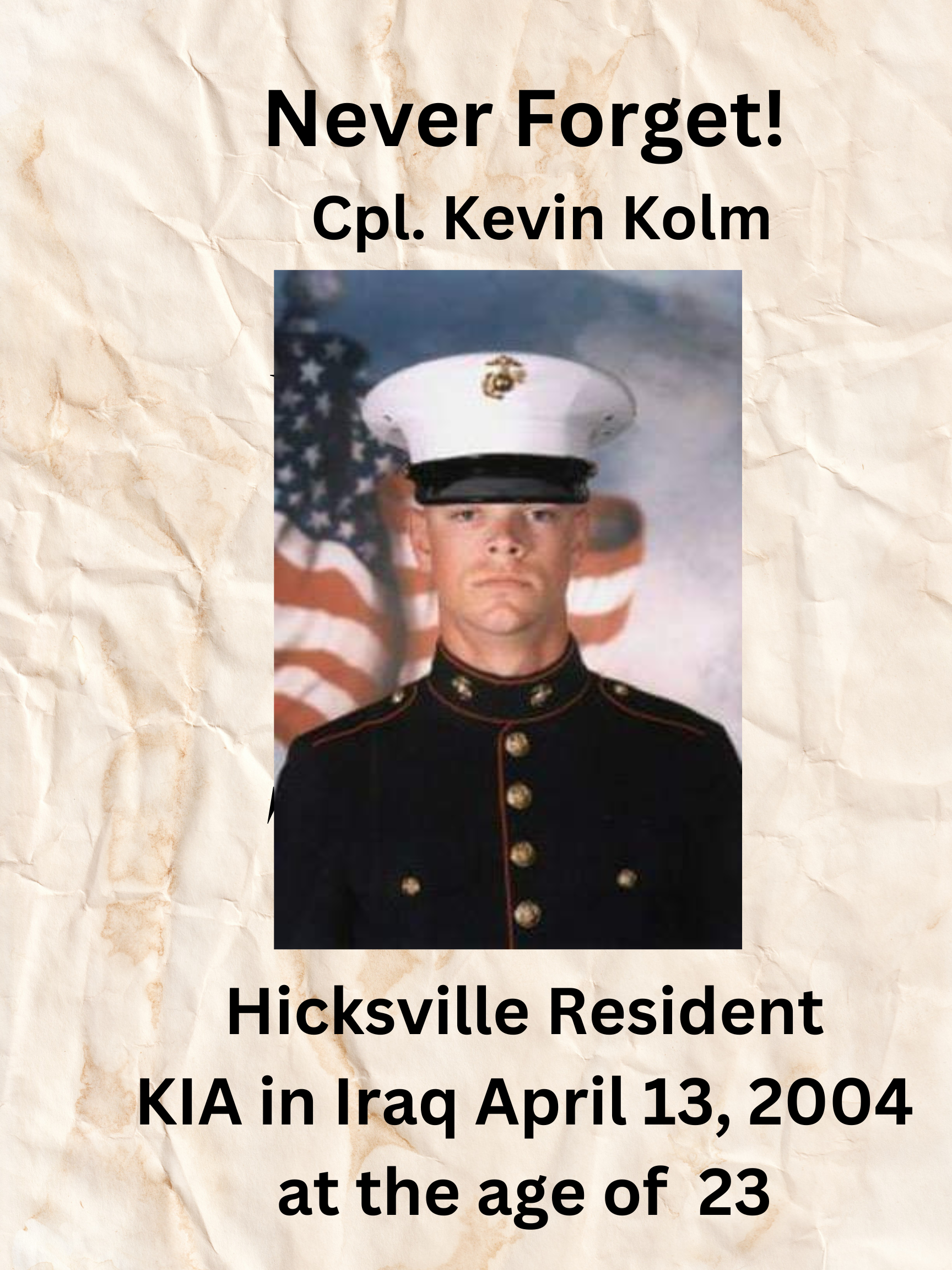 while serving his country in Iraq in 2004. While I have viewed this window many times, because it was May and Memorial Day would be fast approaching, I began to think about how much the town of Hicksville and, particularly, our Hicksville schools, have held fast to its commitment to honor and pay tribute to those who have died in service to our country. To gain a deeper appreciation for how our town embraces the effort to “Always Remember” the ultimate sacrifices made by its young people, I decided that a visit to our Memorial Garden, adjacent to Hicksville Middle School, before Memorial Day was essential. I visited on a quiet day when I could get up close to the plaques and monuments.
while serving his country in Iraq in 2004. While I have viewed this window many times, because it was May and Memorial Day would be fast approaching, I began to think about how much the town of Hicksville and, particularly, our Hicksville schools, have held fast to its commitment to honor and pay tribute to those who have died in service to our country. To gain a deeper appreciation for how our town embraces the effort to “Always Remember” the ultimate sacrifices made by its young people, I decided that a visit to our Memorial Garden, adjacent to Hicksville Middle School, before Memorial Day was essential. I visited on a quiet day when I could get up close to the plaques and monuments.
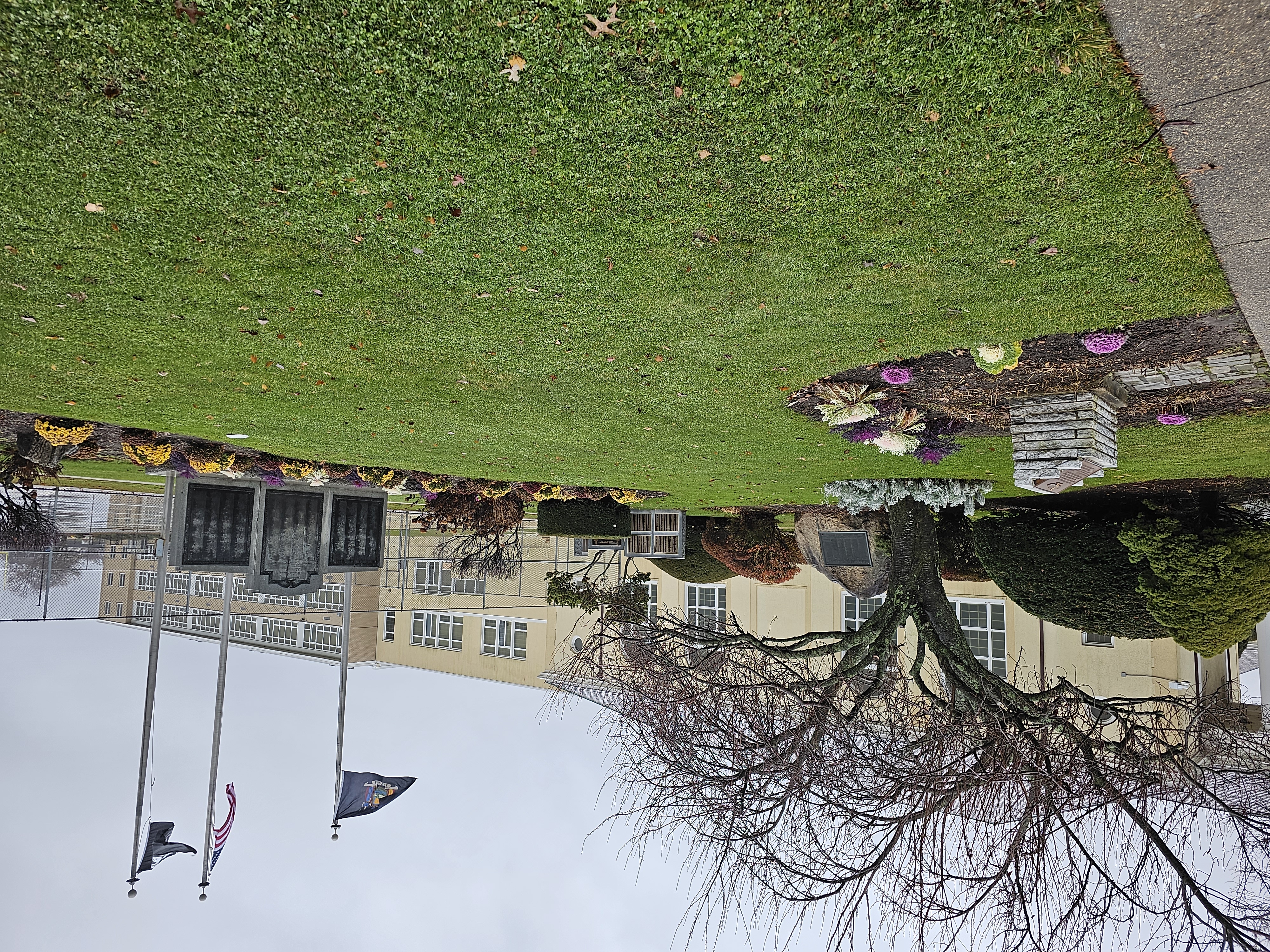 Veterans Memorial at Hicksville Middle School
Veterans Memorial at Hicksville Middle School
Not having grown up in Hicksville, I was surprised when the first monument I chanced to view revealed a dedication dated July 4th, 1919, honoring those who died during the First World War. From the sketchy history I have acquired online or in conversations, I knew that the building we refer to as our Middle School, in fact, opened in 1924 as the combined Middle and Senior High Schools. So the initiative to honor Hicksville’s war dead had its seeds planted at yet 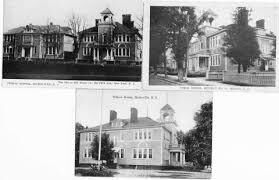 Nicholai Street School (Photo from Classmates.com)another high school building located, on Nicholai Street. What followed, I can conclude from the serene, understated beauty of our Memorial Garden, is a continuing effort to maintain an enduring tribute, reflecting the utmost respect for those we lost throughout the years in faraway places, including Europe, Korea, Vietnam/ Southeast Asia, and the Middle East. The trail of tragic loss had spanned the early 20th century through 100 years into our 21st century Hicksville when war took the life of Kevin T. Kolm in 2004.
Nicholai Street School (Photo from Classmates.com)another high school building located, on Nicholai Street. What followed, I can conclude from the serene, understated beauty of our Memorial Garden, is a continuing effort to maintain an enduring tribute, reflecting the utmost respect for those we lost throughout the years in faraway places, including Europe, Korea, Vietnam/ Southeast Asia, and the Middle East. The trail of tragic loss had spanned the early 20th century through 100 years into our 21st century Hicksville when war took the life of Kevin T. Kolm in 2004.
There are many variations of the statement that “…a hero can die twice, once with their actual demise and twice if they are forgotten and their name not spoken again.” My solitary visit to our Memorial Garden and attendance at our Hicksville Memorial Day Parade and ceremonies, joined by our first responder heroes, local veterans and benevolent organizations and lodges, serves to reinforce that Hicksville will always keep the promise of remembering those who have made the ultimate sacrifice.
The Editors found the names of those listed on the Memorial Plaques erected at the Middle School published in the Nassau Observer:https://antonmediagroup.com/hicksvilles-memorial-day-parade-2024/
From World War I — Joseph Barry, Charles A. Wagner, Walter Wheeler
From World War II — Fred Anderson, Henry A. Gebhart, John Halubowicz, John Haughey, James Madden, Andrew Manelski, Robert Matschat, Arthur F. Noeth, William J. Pakaluk, John Looney, Anthony Petrone, William Remy, Melvin Rohrbach, Wallace Schaefer, Ellsworth Steinert, Gregory Stock, Robert Ulmer, John Zeiler, Raymond Zeltman
From the Korean War — Albert J. Cullen, John Jay Entsrasser, Richard Gogan, Frank Hanson
From the Vietnam War — William A. Aldag, William Chomyk, Edward P. Jackson, Carl N. Kozma, Joseph M. Massone, Paul C. Sawtelle, Ralph Shiavonne, James E. Stolz, Stanley R. Tomasovic, Paul Walkowski, Joseph Waters, David Stanley Wilenski, James O’Neill
From the Iraq War — Kevin T. Kolm
Altogether, from World War I, World War II, the Korean War, the Vietnam War, and the Iraq War, 40 Hicksville Heroes are remembered for sacrificing their lives for our nation. Many thanks should be credited to the Organizing Committee of the Hicksville Memorial Day Parade 2024.
–Submitted by Hicksville Historical Society’s Recording Secretary, Michael Christodoulou
.
Etcetera for June 2024
The editors of HixNews are preparing an article about our Senior Trips. If you have memories and pictures to share, please email them to
Ron Wencer shared these photographs from the 1956 Comet yearbook, when seniors flew to Washington, D.C.
In Memoriam - Names are listed by class on our website.
These are recent submissions. Click the name to open the obituary. It is always sad to learn of the passing of our classmates.
Thomas J. McBride, Jr. (Class of 1989) Passed away May 18, 2024
Gail McCormick Gallo (Class of 1977) Passed away April 23, 2024. Gail lived in Florida, but the link to her obituary doesn't say much. Evidently, she was diabetic and must have experienced some medical emergency and was found by her neighbor. If more information becomes available, we will post it. Thank you to Jeanne Dagna for sharing the news.
Angela DeFendis Davis (Class of 1968) and wife of Steve Davis (Class of 1968), passed away April 11, 2024.
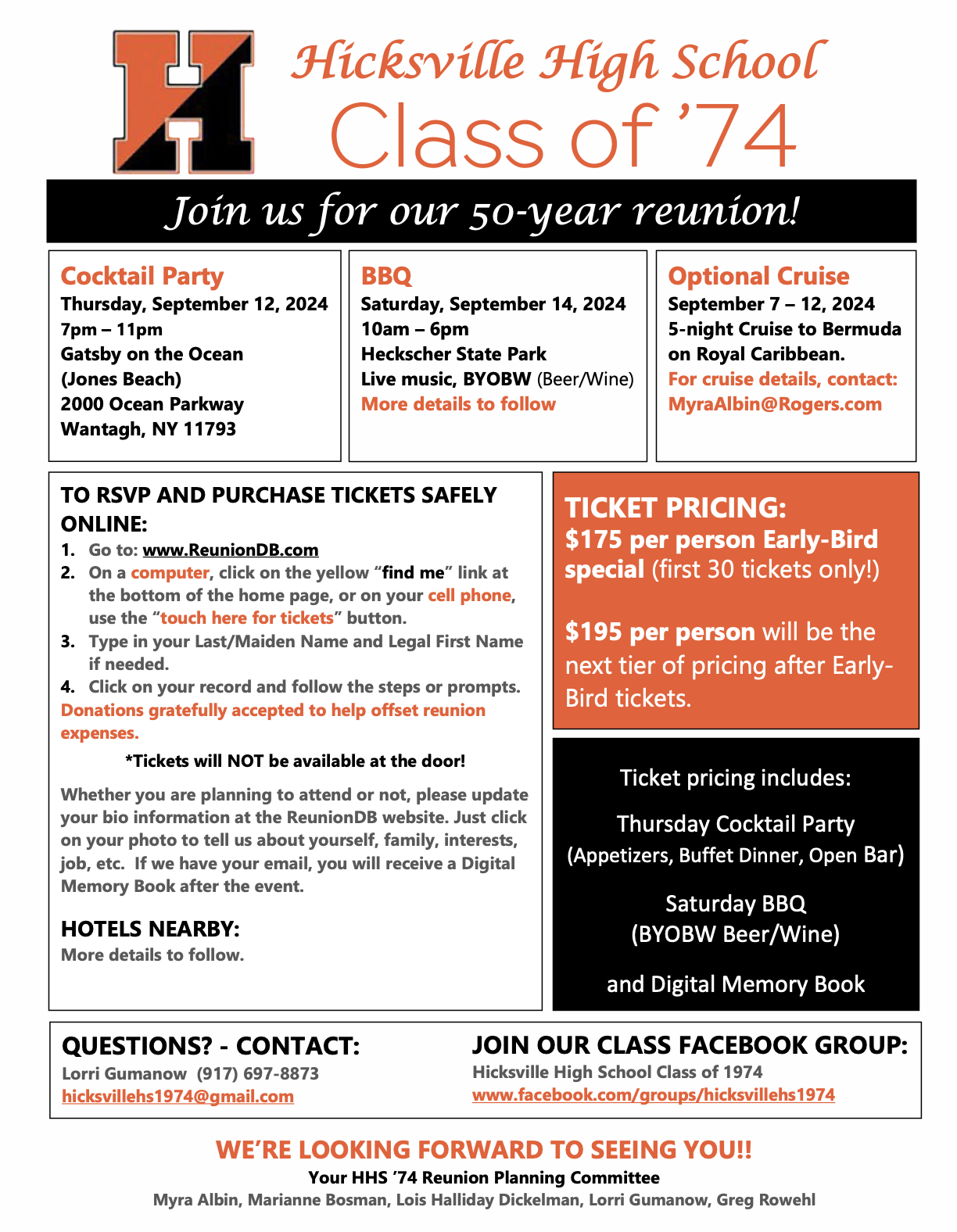
This is a separate reunion from the multi-class reunion that is planned.
Those interested in receiving registration info should please contact Ken Marcus, HHS Class of 1967, at
